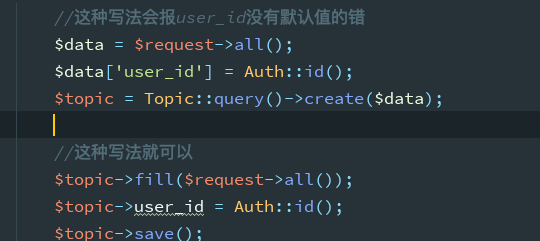create () 和 save () 方法的底层原理是什么?
在laravel文档中看到了create和save操作数据。但是需要注意的是,fillable 与 guarded 只限制了 create 方法,而不会限制 save。
实例:
注意此时模型中的$fillable没加入user_id。
使用create报错,使用save是正常,不用管模型的fillable 与 guarded
但是我看了源码,没看懂。想知道有没有大神告知一下,从源码角度找出这个区别。






 关于 LearnKu
关于 LearnKu




推荐文章: